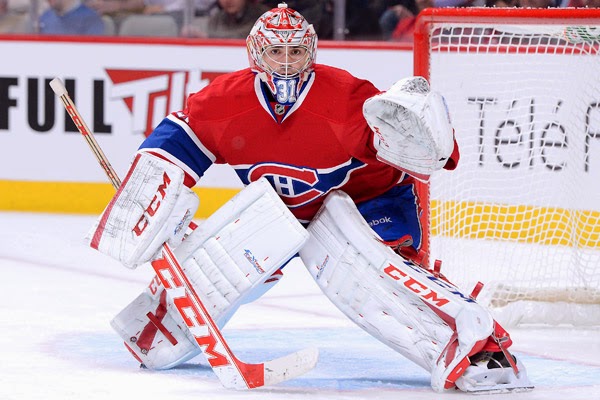
by Shannon Penfound, Staff Writer and Event Coordinator, All Habs Hockey Magazine

WINNIPEG, MB. — Coming off of what most fans would agree was his most successful regular season, it was a disappointingly short playoff run for Canadiens’ net minder, Carey Price. Price was said to have a ‘lower body injury,’ following Game 1 of the Eastern Conference Finals against the New York Rangers. It was later uncovered that Price had actually suffered a sprained right knee which, thankfully, would not require surgery. What all Habs fans want to know is whether or not we can expect Price to be at the top of his game at the start of the regular season?

Price has faced lower body injuries before and, like most goaltenders, understands that they are a common risk associated with this position on the ice. In fact, Price suffered from three lower-body injuries between his 2008-13 seasons with the Canadiens. Each time, Price bounced back quickly and did not appear to be fazed by the injury, or the break in his training or playing routine. However, issues surrounding a return to sport following injury can attach to any athlete at any point in their career. Additionally, an athlete’s likelihood of a successful return to elite sport is heavily dictated by both physical and mental healing. Let’s take a closer look at the last few months of the NHL season.
Price, unbeknownst to fans, and despite putting up a stellar performance, aggravated a pre-existing injury at the Olympic Games. Following his return to Canadian soil, boasting a gold medal, Price and the Canadiens organization announced that the injury would sideline him for a short while, originally estimating only a two-game break. Two games turned into eight, and fans rejoiced as No. 31 finally skated back onto the ice in mid-March. He then helped lead the Canadiens to a 100-point season, only their second time breaking the century mark in the last 20 years. The Canadiens finished fourth in their conference and ninth overall, posting some impressive stats along the way.

I think I speak for many Habs fans when I say that the crash involving New York Rangers forward Chris Kreider was heartbreaking. I had complete faith in the team as a unit, and was pleasantly surprised by the young and tenacious Dustin Tokarski. But Price’s injury impacted the team in its entirety. For one, it helped the team come together to fight in Price’s name so that he may be able to return for the finals. On the other hand, it also meant the team needed to regroup and readjust their playing styles in order to move on with a relatively inexperienced goalie. Though the organization claimed differently, I still wonder if Kreider’s hit re-aggravated the lower body injury Price had faced in Sochi.
Fear of re-injury can actually produce negative thoughts such as reduced confidence and poor focus. For a goaltender, these issues are instrumental in one’s probability of on-ice success. We have witnessed Price’s confidence rise and fall over the years, though it appears as he ages, the more confident he becomes in his abilities. It is also important to keep in mind that any fear associated with re-injury can lead the athlete to develop a lack of trust in the injured area. This can cause the athlete to favour the injured area, possibly leading to re-injury1, and producing a cyclical, uphill battle.
With previous injuries, it often appears as though Price’s lateral movements become somewhat timid upon his return, and this particular apprehension in the net can become a huge deciding factor in his physical and mental success following injury, as well as dictate his potential for re-injury. For most elite athletes, and I would say especially for a determined player like Price, a return from season-ending injury is vital in order for the athlete to feel as though he is still considered a competitor amongst his peers. Additionally, Price will no doubt want to finish what he started in the 2013-’14 season.
Coming close to attaining a goal that is set prior to an injury is a strong indicator of future success in an athlete’s return to sport2. While Price was certainly proud of his achievements in Sochi, his ultimate goal is to have his name, and his teammate’s names, etched onto the Stanley Cup. Essentially, having come that close to attending the Stanley Cup Finals just to have it taken away so abruptly, could actually benefit Price’s physical and mental rehabilitation during the off-season.
For Price, returning to the ice is not the question. He is an unapologetically dominating force on the Canadien team, despite his often quiet and unassuming demeanor. A leader in the purest form of the word, Price will do anything and everything within his power to return to the Canadiens’ line-up stronger than ever.
- Walker, N., Thatcher, J., & Lavallee, D. (2010). A Preliminary Development of the Re-Injury Anxiety Inventory (RIAI). Physical Therapy in Sport, 11(1): 23-29.
- Podlog, L., & Eklund, R.C. (2009). High-level Athletes’ Perceptions of Success in Returning to Sport Following Injury. Research Quality in Sport & Exercise Psychology, 10(5): 535-544.